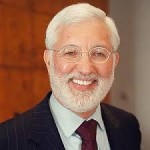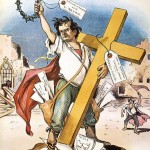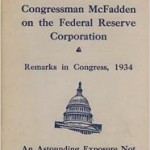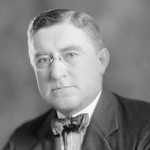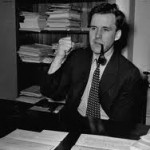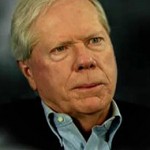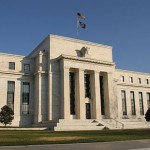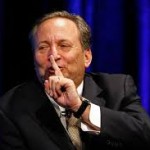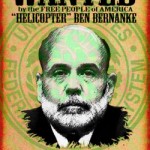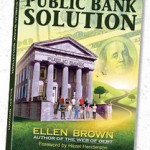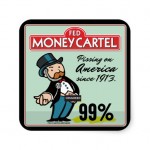Why Have No High Level Executives Been Prosecuted In Connection With The Financial Crisis?
By Jed S. Rakoff November 15, 2013
The following comes to us from the Honorable Judge Jed S. Rakoff, who sits in the U.S. District Court for the Southern District of New York. Judge Rakoff is also an adjunct professor at Columbia Law School. Re-posted from the Columbia Law School blog.
Five years have passed since the onset of what is sometimes called the Great Recession. While the economy has slowly improved, there are still millions of Americans leading lives of quiet desperation: without jobs, without resources, without hope.
Who was to blame? Was it simply a result of negligence, of the kind of inordinate risk-taking commonly called a “bubble,” of an imprudent but innocent failure to maintain adequate reserves for a rainy day? Or was it the result, at least in part, of fraudulent practices, of dubious mortgages portrayed as sound risks and packaged into ever-more-esoteric financial instruments, the fundamental weaknesses of which were intentionally obscured?
If it was the former – if the recession was due, at worst, to a lack of caution – then the criminal law has no role to play in the aftermath. For, in all but a few circumstances (not here relevant), the fierce and fiery weapon called criminal prosecution is directed at intentional misconduct, and nothing less. If the Great Recession was in no part the handiwork of intentionally fraudulent practices by high-level executives, then to prosecute such executives criminally would be “scapegoating” of the most shallow and despicable kind.
Failure of the Criminal Justice System
But if, by contrast, the Great Recession was in material part the product of intentional fraud, the failure to prosecute those responsible must be judged one of the more egregious failures of the criminal justice system in many years. Indeed, it would stand in striking contrast to the increased success that federal prosecutors have had over the past 50 years or so in bringing to justice even the highest level figures who orchestrated mammoth frauds. Thus, in the 1970′s, in the aftermath of the “junk bond” bubble that, in many ways, was a precursor of the more recent bubble in mortgage-backed securities, the progenitors of the fraud were all successfully prosecuted, right up to Michael Milken. Again, in the 1980′s, the so-called savings-and-loan crisis, which again had some eerie parallels to more recent events, resulted in the successful criminal prosecution of more than 800 individuals, right up to Charles Keating. And, again, the widespread accounting frauds of the 1990′s, most vividly represented by Enron and WorldCom, led directly to the successful prosecution of such previously respected C.E.O.’s as Jeffrey Skilling and Bernie Ebbers.
Not a Single High Level Executive Has Been Successfully Prosecuted
In striking contrast with these past prosecutions, not a single high level executive has been successfully prosecuted in connection with the recent financial crisis, and given the fact that most of the relevant criminal provisions are governed by a five-year statute of limitations, it appears very likely that none will be. It may not be too soon, therefore, to ask why.
One possibility, already mentioned, is that no fraud was committed. This possibility should not be discounted. Every case is different, and I, for one, have no opinion as to whether criminal fraud was committed in any given instance.
FBI Warnings Ignored
But the stated opinion of those government entities asked to examine the financial crisis overall is not that no fraud was committed. Quite the contrary. For example, the Financial Crisis Inquiry Commission, in its final report, uses variants of the word “fraud” no fewer than 157 times in describing what led to the crisis, concluding that there was a “systemic breakdown,” not just in accountability, but also in ethical behavior. As the Commission found, the signs of fraud were everywhere to be seen, with the number of reports of suspected mortgage fraud rising 20-fold between 1998 and 2005 and then doubling again in the next four years. As early as 2004, FBI Assistant Director Chris Swecker, was publicly warning of the “pervasive problem” of mortgage fraud, driven by the voracious demand for mortgage-backed securities. Similar warnings, many from within the financial community, were disregarded, not because they were viewed as inaccurate, but because, as one high level banker put it, “A decision was made that ‘We’re going to have to hold our nose and start buying the product if we want to stay in business.’”
Without multiplying examples, the point is that, in the aftermath of the financial crisis, the prevailing view of many government officials (as well as others) was that the crisis was in material respects the product of intentional fraud. In a nutshell, the fraud, they argued, was a simple one. Subprime mortgages, i.e., mortgages of dubious creditworthiness, increasingly provided the sole collateral for highly-leveraged securities that were marketed as triple-A, i.e., of very low risk. How could this transformation of a sow’s ear into a silk purse be accomplished unless someone dissembled along the way?
While officials of the Department of Justice have been more circumspect in describing the roots of the financial crisis than have the various commissions of inquiry and other government agencies, I have seen nothing to indicate their disagreement with the widespread conclusion that fraud at every level permeated the bubble in mortgage-backed securities. Rather, their position has been to excuse their failure to prosecute high level individuals for fraud in connection with the financial crisis on one or more of three grounds:
Justice Department Excuses
First, they have argued that proving fraudulent intent on the part of the high level management of the banks and companies involved has proved difficult. It is undoubtedly true that the ranks of top management were several levels removed from those who were putting together the collateralized debt obligations and other securities offerings that were based on dubious mortgages; and the people generating the mortgages themselves were often at other companies and thus even further removed. And I want to stress again that I have no opinion as to whether any given top executive had knowledge of the dubious nature of the underlying mortgages, let alone fraudulent intent. But what I do find surprising is that the Department of Justice should view the proving of intent as so difficult in this context. Who, for example, were generating the so-called “suspicious activity” reports of mortgage fraud that, as mentioned, increased so hugely in the years leading up to the crisis? Why, the banks themselves. A top level banker, one might argue, confronted with increasing evidence from his own and other banks that mortgage fraud was increasing, might have inquired as to why his bank’s mortgage-based securities continued to receive triple-A ratings? And if, despite these and other reports of suspicious activity, the executive failed to make such inquiries, might it be because he did not want to know what such inquiries would reveal?
This, of course, is what is known in the law as “willful blindness” or “conscious disregard.” It is a well-established basis on which federal prosecutors have asked juries to infer intent, in cases involving complexities, such as accounting treatments, at least as esoteric as those involved in the events leading up to the financial crisis. And while some federal courts have occasionally expressed qualifications about the use of the willful blindness approach to prove intent, the Supreme Court has consistently approved it. As that Court stated most recently in Global-Tech Appliances, Inc. v. SEB S.A., 131 S.Ct. 2060, 2068 (2011), “The doctrine of willful blindness is well established in criminal law. Many criminal statutes require proof that a defendant acted knowingly or willfully, and courts applying the doctrine of willful blindness hold that defendants cannot escape the reach of these statutes by deliberately shielding themselves from clear evidence of critical facts that are strongly suggested by the circumstances.” Thus, the Department’s claim that proving intent in the financial crisis context is particularly difficult may strike some as doubtful.
Second, and even weaker, the Department of Justice has sometimes argued that, because the institutions to whom mortgage-backed securities were sold were themselves sophisticated investors, it might be difficult to prove reliance. Thus, in defending the failure to prosecute high level executives for frauds arising from the sale of mortgage-backed securities, the then head of the Department of Justice’s Criminal Division, told PBS that “in a criminal case … I have to prove not only that you made a false statement but that you intended to commit a crime, and also that the other side of the transaction relied on what you were saying. And frankly, in many of the securitizations and the kinds of transactions we’re talking about, in reality you had very sophisticated counter-parties on both sides. And so even though one side may have said something was dark blue when really we can say it was sky blue, the other side of the transaction, the other sophisticated party, wasn’t relying at all on the description of the color.”
Actually, given the fact that these securities were bought and sold at lightning speed, it is by no means obvious that even a sophisticated counter-party would have detected the problems with the arcane, convoluted mortgage-backed derivatives they were being asked to purchase. But there is a more fundamental problem with the above-quoted statement from the former head of the Criminal Division, which is that it totally misstates the law. In actuality, in a criminal fraud case the Government is never required to prove reliance, ever. The reason, of course, is that would give a crooked seller a license to lie whenever he was dealing with a sophisticated counter-party. The law, however, says that society is harmed when a seller purposely lies about a material fact, even if the immediate purchaser does not rely on that particular fact, because such misrepresentations create problems for the market as a whole. And surely there never was a situation in which the sale of dubious mortgage-backed securities created more of a huge problem for the marketplace, and society as a whole, than in the recent financial crisis.
“Too Big To Jail” Excuse is Disturbing
The third reason the Department has sometimes given for not bringing these prosecutions is that to do so would itself harm the economy. Thus, Attorney General Holder himself told Congress that “it does become difficult for us to prosecute them when we are hit with indications that if we do prosecute – if we do bring a criminal charge – it will have a negative impact on the national economy, perhaps even the world economy.” To a federal judge, who takes an oath to apply the law equally to rich and to poor, this excuse — sometimes labeled the “too big to jail” excuse – is disturbing, frankly, in what it says about the Department’s apparent disregard for equality under the law.
In fairness, however, Mr. Holder was referring to the prosecution of financial institutions, rather than their C.E.O.’s. Moreover, he might have also been influenced, as his Department unquestionably was, by the adverse reaction to the Arthur Anderson case, where that accounting firm was run out of business by a prosecution that was ultimately reversed on appeal. But if we are talking about prosecuting individuals, the excuse becomes entirely irrelevant; for no one that I know of has ever contended that a big financial institution would collapse if one or more of its high level executives were prosecuted, as opposed to the institution itself.
Without multiplying examples further, my point is that the Department of Justice has never taken the position that all the top executives involved in the events leading up to the financial crisis were innocent, but rather has offered one or another excuse for not criminally prosecuting them – excuses that, on inspection, appear unconvincing. So, you might ask, what’s really going on here? I don’t claim to have any inside information about the real reasons why no such prosecutions have been brought, but I take the liberty of offering some speculations, for your consideration or amusement as the case may be.
At the outset, however, let me say that I totally discount the argument sometimes made that no such prosecutions have been brought because the top prosecutors were often people who previously represented the financial institutions in question and/or were people who expected to be representing such institutions in the future: the so-called “revolving door.” In my experience, every federal prosecutor, at every level, is seeking to make a name for him-or-herself, and the best way to do that is by prosecuting some high level person. While companies that are indicted almost always settle, individual defendants whose careers are at stake will often go to trial. And if the Government wins such a trial, as it usually does, the prosecutor’s reputation is made. My point is that whatever small influence the “revolving door” may have in discouraging certain white-collar prosecutions is more than offset, at least in the case of prosecuting high-level individuals, by the career-making benefits such prosecutions confer on the successful prosecutor.
So, one asks again, why haven’t we seen such prosecutions growing out of the financial crisis? I offer, by way of speculation, three influences that I think, along with others, have had the effect of limiting such prosecutions.
1,000 FBI Agents Re-Assigned From Financial Fraud to 9-11 Investigation
First, the prosecutors had other priorities. Some of these were completely understandable. For example, prior to 2001, the FBI had more than 1,000 agents assigned to investigating financial frauds, but after 9/11 many of these agents were shifted to anti-terrorism work. Who can argue with that? Eventually, it is true, new agents were hired for some of the vacated spots in fraud detection; but this is not a form of detection easily learned and recent budget limitations have only exacerbated the problem.
Of course, the FBI is not the primary investigator of fraud in the sale of mortgage-backed securities; that responsibility lies mostly with the S.E.C. But at the very time the financial crisis was breaking, the S.E.C. was trying to deflect criticism from its failure to detect the Madoff fraud, and this led it to concentrate on other Ponzi-like schemes, which for awhile were, along with accounting frauds, its chief focus. More recently, the S.E.C. has been hard hit by budget limitations, and this has not only made it more difficult to assign the kind of manpower the kinds of frauds we are talking about require, but also has led S.E.C. enforcement to focus on the smaller, easily resolved cases that will beef up their statistics when they go to Congress begging for money.
As for the Department of Justice proper, a decision was made around 2009 to spread the investigation of these financial fraud cases among numerous U.S. Attorney’s Offices, many of which had little or no prior experience in investigating and prosecuting sophisticated financial frauds. At the same time, the U.S. Attorney’s Office with the greatest expertise in these kinds of cases, the Southern District of New York, was just embarking on its prosecution of insider trading cases arising from the Rajaratnam tapes, which soon proved a gold mine of good cases that absorbed a huge amount of the attention of the securities fraud unit of that office. While I want to stress again that I have no inside information, as a former chief of that unit I would venture to guess that the cases involving the financial crisis were parceled out to Assistants who also had insider trading cases. Which do you think an Assistant would devote most of her attention to: an insider trading case that was already nearly ready to go to indictment and that might lead to a high visibility trial, or a financial crisis case that was just getting started, would take years to complete, and had no guarantee of even leading to an indictment? Of course, she would put her energy into the insider trading case, and if she was lucky, it would go to trial, she would win, and she would then take a job with a large law firm. And in the process, the financial fraud case would get lost in the shuffle.
Alternative priorities, in short, is, I submit, one of the reasons the financial fraud cases were not brought, especially cases against high level individuals that would take many years, many investigators, and a great deal of expertise to investigate. But a second, and less salutary, reason for not bringing such cases is the Government’s own involvement in the underlying circumstances that led to the financial crisis.
Government Itself Created the Conditions – Glass-Steagall Repealed
On the one hand, the government, writ large, had a hand in creating the conditions that encouraged the approval of dubious mortgages. Even before the start of the housing boom, it was the government, in the form of Congress, that repealed Glass-Steagall, thus allowing certain banks that had previously viewed mortgages as a source of interest income to become instead deeply involved in securitizing pools of mortgages in order to obtain the much greater profits available from trading. It was the government, in the form of both the executive and the legislature, that encouraged deregulation, thus weakening the power and oversight not only of the S.E.C. but also of such diverse banking overseers as the O.T.S. and the O.C.C. It was the government, in the form of the Fed, that kept interest rates low in part to encourage mortgages. It was the government, in the form of the executive, that strongly encouraged banks to make loans to low-income persons who might have previously been regarded as too risky to warrant a mortgage. It was the government, in the form of the government-sponsored entities known as Fannie Mae and Freddie Mac, that helped create the fora- time insatiable market for mortgage-backed securities. And it was the government, pretty much across the board, that acquiesced in the ever greater tendency not to require meaningful documentation as a condition of obtaining a mortgage, often preempting in this regard state regulations designed to assure greater mortgage quality and a borrower’s ability to repay.
The result of all this was the mortgages that later became known as “liars’ loans.” They were increasingly risky; but what did the banks care, since they were making their money from the securitizations; and what did the government care, since they were helping to boom the economy and helping voters to realize their dream of owning a home.
Government Forced Mergers
Moreover, the government was also deeply enmeshed in the aftermath of the financial crisis. It was the government that proposed the shotgun marriages of Bank of America with Merrill Lynch, of J.P. Morgan with Bear Stearns, etc. If, in the process, mistakes were made and liabilities not disclosed, was it not partly the government’s fault?
Please do not misunderstand me. I am not alleging that the Government knowingly participated in any of the fraudulent practices alleged by the Financial Inquiry Crisis Commission and others. But what I am suggesting is that the Government was deeply involved, from beginning to end, in helping create the conditions that could lead to such fraud, and that this would give a prudent prosecutor pause in deciding whether to indict a C.E.O. who might, with some justice, claim that he was only doing what he fairly believed the Government wanted him to do.
Shift From Prosecuting High-Level Individuals to Prosecuting Corporations
The final factor I would mention is both the most subtle and the most systemic of the three, and arguably the most important, and it is the shift that has occurred over the past 30 years or more from focusing on prosecuting high-level individuals to focusing on prosecuting companies and other institutions. It is true that prosecutors have brought criminal charges against companies for well over a hundred years, but, until relatively recently, such prosecutions were the exception, and prosecutions of companies without simultaneous prosecutions of their managerial agents were even rarer. The reasons were obvious. Companies do not commit crimes; only their agents do. And while a company might get the benefit of some such crimes, prosecuting the company would inevitably punish, directly or indirectly, the many employees and shareholders who were totally innocent. Moreover, under the law of most U.S. jurisdictions, a company cannot be criminally liable unless at least one managerial agent has committed the crime in question; so why not prosecute the agent who actually committed the crime?
In recent decades, however, prosecutors have been increasingly attracted to prosecuting companies, often even without indicting a single individual. This shift has often been rationalized as part of an attempt to transform “corporate cultures,” so as to prevent future such crimes; and, as a result, it has taken the form of “deferred prosecution agreements” or even “non-prosecution agreements,” in which the company, under threat of criminal prosecution, agrees to take various prophylactic measures to prevent future wrongdoing. But in practice, I suggest, it has led to some lax and dubious behavior on the part of prosecutors, with deleterious results.
If you are a prosecutor attempting to discover the individuals responsible for an apparent financial fraud, you go about your business in much the same way you go after mobsters or drug kingpins: you start at the bottom and, over many months or years, slowly work your way up. Specifically, you start by “flipping” some lower or mid-level participant in the fraud whom you can show was directly responsible for making one or more false material misrepresentations but who is willing to cooperate, and maybe even “wear a wire” (i.e. secretly record his colleagues), in order to reduce his sentence. With his help, and aided by the substantial prison penalties now available in white collar cases, you go up the ladder. For a detailed example of how this works, I recommend Kurt Eichenwald’s well-known book The Informant, which describes how FBI agents, over a period of three years, uncovered the huge price-fixing conspiracy involving high-level executives at Archer Daniels, all of whom were successfully prosecuted.
But if your priority is prosecuting the company, a different scenario takes place. Early in the investigation, you invite in counsel to the company and explain to him or her why you suspect fraud. He or she responds by assuring you that the company wants to cooperate and do the right thing, and to that end the company has hired a former Assistant U.S. Attorney, now a partner at a respected law firm, to do an internal investigation. The company’s counsel asks you to defer your investigation until the company’s own internal investigation is completed, on the condition that the company will share its results with you. In order to save time and resources, you agree. Six months later the company’s counsel returns, with a detailed report showing that mistakes were made but that the company is now intent on correcting them. You and the company then agree that the company will enter into a deferred prosecution agreement that couples some immediate fines with the imposition of expensive but internal prophylactic measures. For all practical purposes the case is now over. You are happy because you believe that you have helped prevent future crimes; the company is happy because it has avoided a devastating indictment; and perhaps the happiest of all are the executives, or former executives, who actually committed the underlying misconduct, for they are left untouched.
I suggest that this is not the best way to proceed. Although it is supposedly justified in terms of preventing future crimes, I suggest that the future deterrent value of successfully prosecuting individuals far outweighs the prophylactic benefits of imposing internal compliance measures that are often little more than window-dressing. Just going after the company is also both technically and morally suspect. It is technically suspect because, under the law, you should not indict or threaten to indict a company unless you can prove beyond a reasonable doubt that some managerial agent of the company committed the alleged crime; and if you can prove that, why not indict the manager? And from a moral standpoint, punishing a company and its many innocent employees and shareholders for the crimes committed by some unprosecuted individuals seems contrary to elementary notions of moral responsibility.
These criticisms take on special relevance, however, in the instance of investigations growing out of the financial crisis, because, as noted, the Department of Justice’s position, until at least very recently, is that going after the suspect institutions poses too great a risk to the nation’s economic recovery. So you don’t go after the companies, at least not criminally, because they are too big to jail; and you don’t go after the individuals, because that would involve the kind of years-long investigations that you no longer have the experience or the resources to pursue
In conclusion, I want to stress again that I have no idea whether the financial crisis that is still causing so many of us so much pain and despondency was the product, in whole or in part, of fraudulent misconduct. But if it was — as various governmental authorities have asserted it was –- then, the failure of the government to bring to justice those responsible for such colossal fraud bespeaks weaknesses in our prosecutorial system that need to be addressed.
